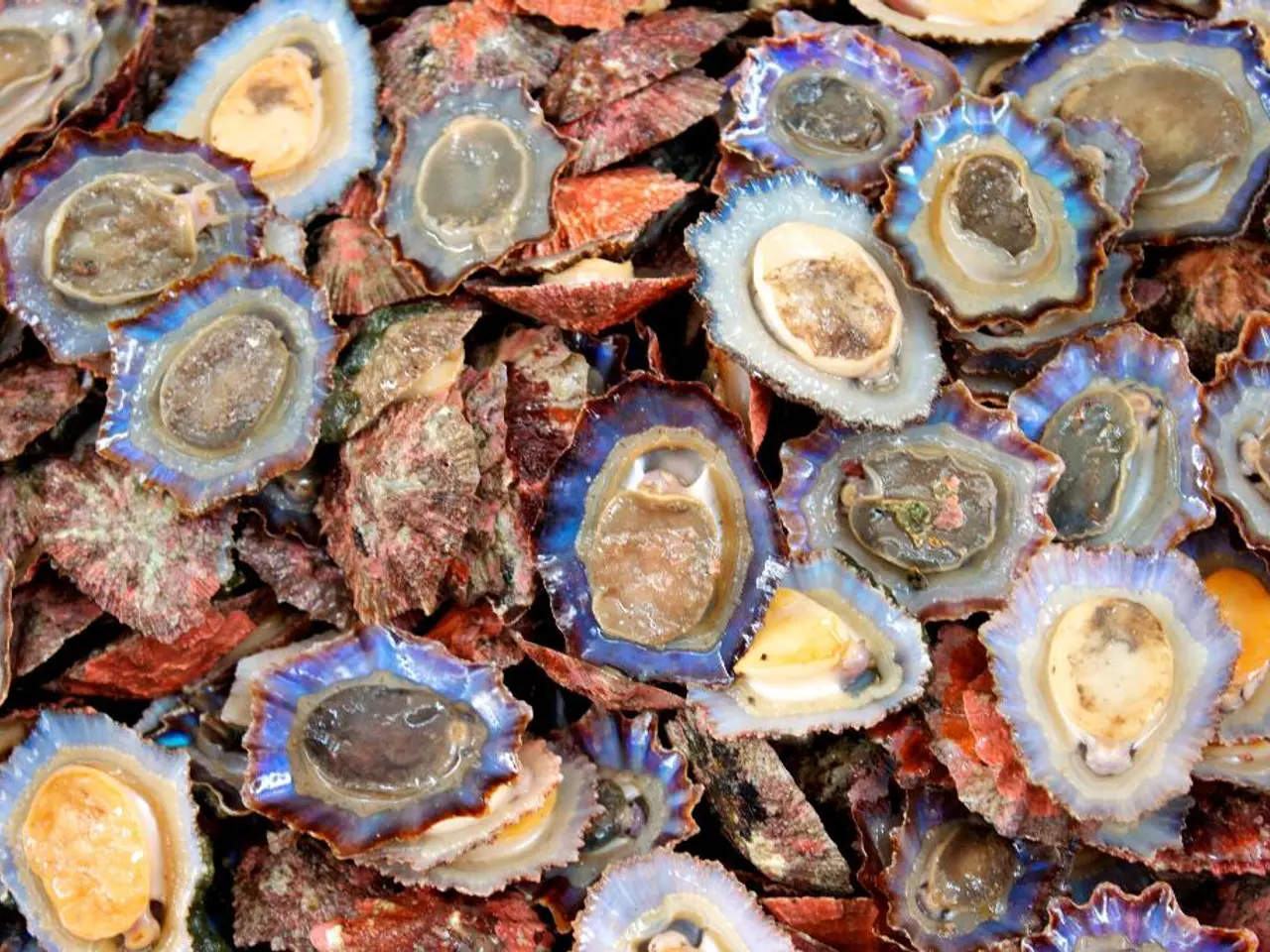Scombroid Syndrome: Understanding its Causes, Symptoms, and Remedies
Scombroid poisoning is a type of food poisoning that affects individuals who consume fish species high in histidine, such as tuna, bluefin, yellowfin, and bonitos [1][3][4]. This condition is not an infection and does not require antibiotics for treatment.
The poisoning occurs when these fish, particularly those that have been improperly stored, spoil due to bacterial activity. Bacteria like E. coli, Morganella morganii, Pseudomonas aeruginosa, and Klebsiella species, as well as Photobacterium damselae subsp., are responsible for the condition in fish [2].
When these fish are not kept sufficiently cold after catch, certain bacteria proliferate and decarboxylate free histidine in the fish muscle to histamine, a biogenic amine [2]. This process is accelerated by temperature abuse, delays or lapses during handling, transport, and storage, and failure to maintain the cold chain [4][5].
Symptoms of scombroid poisoning resemble an allergic reaction and may include flushing, itching, headache, rapid or irregular heartbeat, shortness of breath, and abdominal cramps. However, unlike allergic reactions, cooking or freezing the fish will not get rid of the histamine that causes the symptoms [1].
Mild cases of scombroid poisoning often resolve quickly without medication. In severe cases, individuals may require a trip to the emergency room and may be treated with intravenous fluids, oxygen, and other medications. It is best for individuals experiencing severe symptoms that are not life-threatening to see an allergist to determine if they are having an allergic reaction to the fish or if it is scombroid poisoning [1].
For those who catch their own fish, the only reliable way to prevent scombroid poisoning is by keeping the fish in a refrigerator set to 40°F (4°C) or lower [1]. When eating fish in a restaurant, it is difficult to tell if it is spoiled, as it generally does not have a noticeable smell or taste. A salty, sharp, or peppery taste may act as red flags that indicate spoilage resulting from histamine [1].
The American Academy of Allergy, Asthma & Immunology (AAAAI) states that antihistamines, such as diphenhydramine (Benadryl), may help some people with scombroid poisoning [1]. The National Capital Poison Center confirms that scombroid poisoning is not a true allergy to a particular fish [1].
The Centers for Disease Control and Prevention (CDC) lists tuna, mackerel, bluefish, mahi mahi, herring, sardine, amberjack, anchovies, and marlin as fish species commonly involved in scombroid poisoning [1]. Individuals with low levels of the enzyme diamine oxidase are more likely to experience scombroid poisoning, according to the AAAI [1].
When someone gets scombroid poisoning from a restaurant or fish market, they should report it to public health authorities for investigation to prevent further outbreaks from the source [1]. Severe cases of scombroid poisoning include chest pain, trouble breathing, and swelling of the tongue and mouth [1].
In summary, scombroid poisoning is a form of food poisoning caused by eating fish species containing high amounts of histidine, which is converted into histamine under certain conditions due to bacterial activity during improper storage. To prevent scombroid poisoning, it is essential to maintain proper temperature control and storage conditions for these fish species.
- Scombroid poisoning, a type of food poisoning, affects individuals who consume fish high in histidine like tuna, bluefin, yellowfin, and bonitos.
- This condition is not an infection and does not necessitate antibiotics for treatment.
- Bacterial activity is responsible for the condition following improper storage of fish, including E. coli, Morganella morganii, Pseudomonas aeruginosa, Klebsiella species, and Photobacterium damselae subsp.
- The bacteria proliferate and decarboxylate free histidine in the fish muscle to histamine, a biogenic amine.
- Scombroid poisoning symptoms resemble an allergic reaction, with flushing, itching, headache, rapid heartbeat, shortness of breath, and abdominal cramps occurring.
- Mild cases of scombroid poisoning usually resolve quickly without medication, while severe cases may require medical attention, including intravenous fluids, oxygen, and antihistamines (like diphenhydramine).
- For those who catch their own fish, refrigerating it at 40°F (4°C) or lower is the only reliable way to prevent scombroid poisoning.
- Eating at a restaurant, the fish's spoilage is often not noticeable, with a salty, sharp, or peppery taste possibly indicating histamine due to spoilage.
- The American Academy of Allergy, Asthma & Immunology (AAAAI) suggests that antihistamines may help some people with scombroid poisoning, though it is not a true allergy to a particular fish.
- The Centers for Disease Control and Prevention (CDC) lists various fish species such as tuna, mackerel, bluefish, mahi mahi, herring, sardine, amberjack, anchovies, and marlin as those commonly linked to scombroid poisoning.
- Individuals with low levels of the enzyme diamine oxidase are more likely to experience scombroid poisoning, as pointed out by the AAAI.
- When someone experiences scombroid poisoning from a restaurant or fish market, it is critical to report it to public health authorities for further investigation to prevent further outbreaks from the source.
- To prevent scombroid poisoning, maintaining proper temperature control and storage conditions for these fish species is essential. Health- and workplace-wellness initiatives can educate employees on foods to avoid, fitness-and-exercise programs for mental-health benefits, and healthy-cooking classes emphasizing nutritious food-and-drink options for overall wellbeing, including mindfulness practices, career development, goal-setting, and skills training for personal growth and productivity.




